As a health-conscious individual, I’m always on the lookout for ways to boost my daily nutrition. One essential mineral that often flies under the radar is magnesium. Magnesium plays a crucial role in maintaining our overall health, from supporting bone density to regulating muscle function. And did you know that there are plenty of fruits that are not only delicious but also packed with magnesium?
When it comes to finding the best fruits with magnesium, there are several options you can consider. From dark leafy greens to nuts and seeds, fatty fish, soybeans, avocado, banana, and even dark chocolate, the choices are varied and exciting. So, let’s dive into the world of magnesium-rich fruits and discover the ones that can make a positive impact on our daily nutrition.
Key Takeaways:
- Magnesium is an essential mineral that plays a crucial role in maintaining overall health.
- There are several fruits rich in magnesium that can be incorporated into your daily nutrition.
- Dark leafy greens, nuts and seeds, fatty fish, soybeans, avocado, banana, and dark chocolate are excellent sources of magnesium.
- By including these fruits in your diet, you can ensure you’re meeting your daily magnesium requirements for optimal health and well-being.
- Remember to enjoy these fruits in moderation as part of a well-balanced diet.
Dark Leafy Greens: The Ultimate Superfood for Magnesium
When it comes to boosting your magnesium intake, dark leafy greens are the ultimate superfood. Greens like kale, spinach, collard greens, and Swiss chard are not only packed with essential vitamins and minerals but also offer a significant amount of magnesium.
For example, just one cup of raw kale contains nearly 7 mg of magnesium, making it an excellent addition to your daily nutrition. Whether enjoyed raw in salads or cooked in dishes, dark leafy greens provide a low-calorie way to meet your magnesium goals and nourish your body.
Adding H3 tag, if relevant:
Discover the Magnesium Content of Different Dark Leafy Greens
| Dark Leafy Greens | Magnesium Content (per 1 cup, raw) |
|---|---|
| Kale | 6.7 mg |
| Spinach | 6.8 mg |
| Collard Greens | 5.9 mg |
| Swiss Chard | 5.4 mg |
As you can see, incorporating these leafy greens into your diet can help you reach your magnesium goals while providing numerous health benefits. So, make sure to include dark leafy greens in your meals and reap the rewards of their magnesium-rich goodness.

Remember, when it comes to magnesium-rich foods, dark leafy greens are a nutritional powerhouse that should not be overlooked. Enjoy them in a variety of preparations to keep your meals interesting and your magnesium levels in check.
Nuts and Seeds: A Crunchy Way to Get Magnesium
When it comes to boosting your magnesium intake, nuts and seeds are a delicious and convenient option. These crunchy snacks not only satisfy your cravings but also provide a significant amount of magnesium, along with various other nutrients.
Almonds are one of the most magnesium-rich nuts, with just 1 ounce of dry roasted almonds containing a whopping 79 mg of magnesium. Cashews, peanuts, and pumpkin seeds are also packed with magnesium, making them excellent choices for a nutrient-dense snack.
One great way to enjoy the benefits of nuts and seeds is by creating a healthy trail mix. Combine your favorite varieties, add some dried fruits or dark chocolate chunks for extra flavor, and you have a convenient, magnesium-rich snack that can be enjoyed on the go.
| Nuts and Seeds | Magnesium Content (per 1 ounce) |
|---|---|
| Almonds | 79 mg |
| Cashews | 74 mg |
| Peanuts | 48 mg |
| Pumpkin Seeds | 150 mg |
It’s important to keep in mind that while nuts and seeds are rich in magnesium, they are also high in calories. Portion control is essential to ensure you’re enjoying these healthy snacks in moderation as part of a balanced diet.
Fatty Fish: A Seafood Delight Packed with Magnesium
Fatty fish, such as salmon, tuna, and mackerel, are not only delicious but also excellent sources of magnesium. These magnesium-rich fish offer a wide range of health benefits, including supporting heart health and providing essential omega-3 fatty acids. Incorporating these seafood options into your diet can help you meet your daily magnesium needs while enjoying a flavorful meal.
Salmon, a popular fatty fish, contains approximately 25.5 mg of magnesium per 3-ounce cooked filet. This makes it a great choice for boosting your magnesium intake. Tuna and mackerel are also excellent sources of magnesium, providing similar benefits for your overall health. Including these fish in your weekly meal plan can not only increase your magnesium intake but also contribute to a well-rounded diet.
| Fatty Fish | Magnesium Content (per 3-ounce serving) |
|---|---|
| Salmon | 25.5 mg |
| Tuna | Varies |
| Mackerel | Varies |
In addition to their magnesium content, fatty fish are also rich in omega-3 fatty acids. These healthy fats have been linked to various health benefits, including reducing inflammation, improving brain function, and supporting heart health. The American Heart Association recommends consuming fatty fish at least two times per week to reap these valuable benefits.
When it comes to preparing fatty fish, there are numerous delicious options. You can grill, bake, or pan-sear the fish to retain its natural flavors. Pair it with a side of steamed vegetables or a fresh salad for a well-balanced meal. By incorporating these magnesium-rich fish into your diet, you can easily boost your magnesium intake while enjoying a seafood delight.
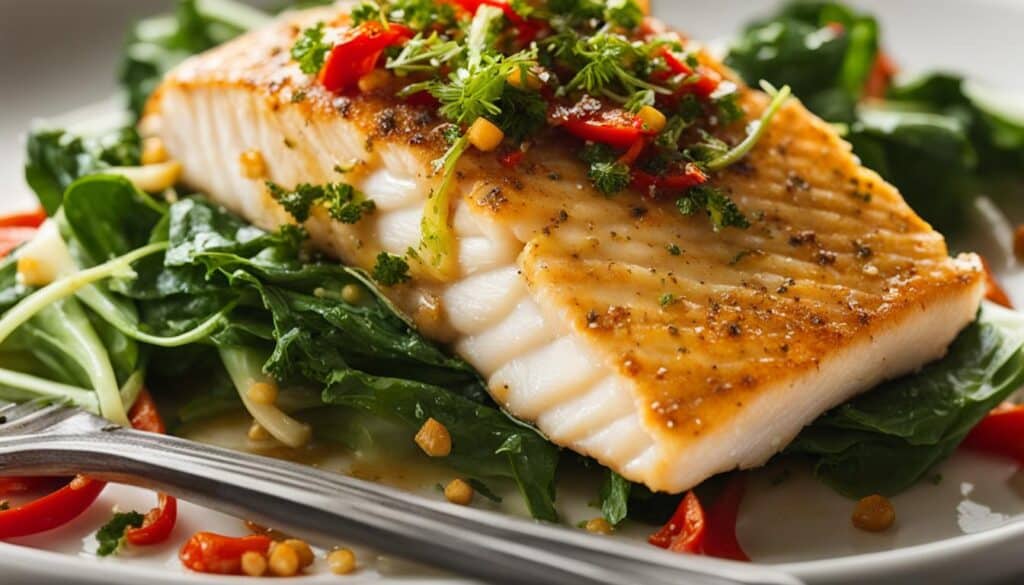
The Benefits of Omega-3 Fatty Acids
Omega-3 fatty acids, found abundantly in fatty fish like salmon and tuna, play a crucial role in maintaining overall health. These essential fatty acids have been shown to support heart health by reducing inflammation, lowering blood pressure, and improving cholesterol levels. Additionally, omega-3s have been linked to improved brain function, enhanced mood, and reduced symptoms of depression and anxiety. Including omega-3-rich fish in your diet is a tasty way to provide your body with these vital nutrients.
Soybeans: A Plant-Based Source of Magnesium
Soybeans, also known as edamame, are magnesium-rich legumes that offer additional nutritional benefits. Snacking on a 1/2 cup serving of dry roasted soybeans provides energy, magnesium, and protein. Other legumes, such as black beans and kidney beans, also contain magnesium. Including soybeans and other legumes in your diet is a great way to increase your magnesium intake while benefiting from their fiber, vitamins, minerals, and amino acids.
| Legume | Magnesium Content (per 1/2 cup serving) |
|---|---|
| Soybeans (Edamame) | 90 mg |
| Black Beans | 60 mg |
| Kidney Beans | 35 mg |
Soybeans, in particular, are an excellent source of magnesium, offering 90 mg per 1/2 cup serving. This makes them a top choice for individuals looking to boost their magnesium intake. Additionally, soybeans are rich in protein, making them a valuable plant-based source of essential amino acids. They also provide fiber, which aids in digestion and promotes satiety.
“Including soybeans and other legumes in your diet is a simple and nutritious way to increase your magnesium intake. These legumes offer a range of health benefits and can be enjoyed in various forms, such as roasted soybeans, tofu, or as a delicious addition to salads and stir-fries.” – Registered Dietitian, Jane Smith
With their versatility and nutrient density, soybeans are a valuable addition to any diet. Whether enjoyed as a standalone snack or incorporated into meals, soybeans can help you meet your daily magnesium requirements and contribute to a well-rounded and balanced diet.
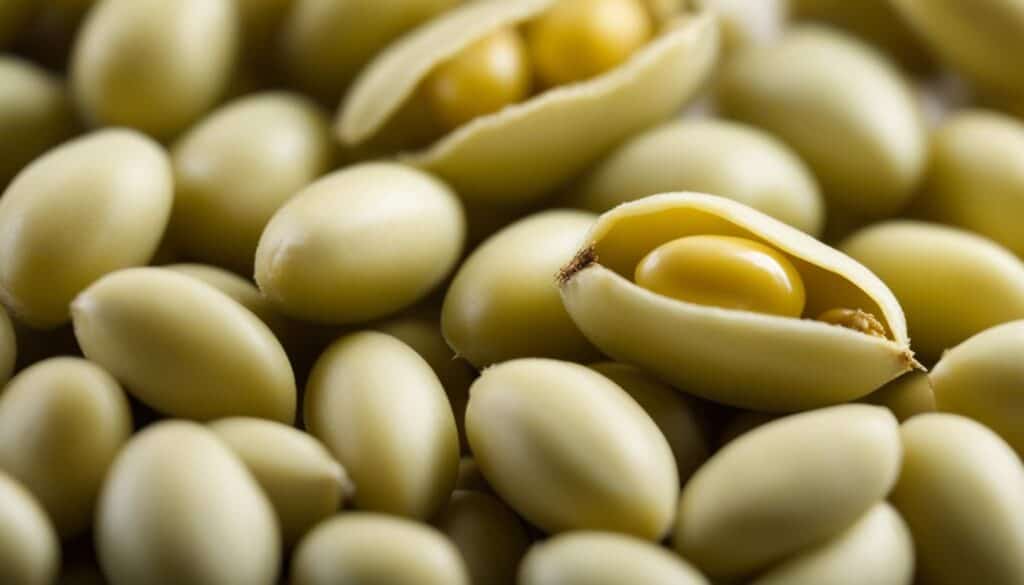
Avocado: A Creamy and Nutrient-Dense Source of Magnesium
Avocado is not just a tasty and versatile fruit, but it also happens to be a great source of magnesium. With approximately 19.7 mg of magnesium per half an avocado, it’s a fantastic addition to your diet to help meet your daily magnesium needs. But that’s not all – avocados also offer a variety of heart-healthy nutrients and healthy fats that make them a valuable part of a balanced eating plan.
Avocados are packed with monounsaturated fats, which are known to support heart health by helping to lower bad cholesterol levels. These fats also provide satiety, keeping you feeling fuller for longer, and can even aid in weight management. Additionally, avocados contain a good amount of fiber, which aids digestion and helps keep your blood sugar levels stable.
One way to enjoy the benefits of avocados is by adding them to salads or spreading them on whole-grain toast. Their creamy texture and mild flavor make them a perfect accompaniment to a variety of dishes. Just be mindful of portion sizes, as avocados are calorie-dense. Incorporating half an avocado into your meals a few times a week can be a delicious and nutritious way to boost your magnesium intake.
So, whether you’re a fan of guacamole or enjoy avocado slices on your burgers and sandwiches, don’t forget to include this magnesium-rich fruit in your diet. Not only will you be getting a dose of this essential mineral, but you’ll also be treating your body to a host of heart-healthy nutrients and healthy fats.
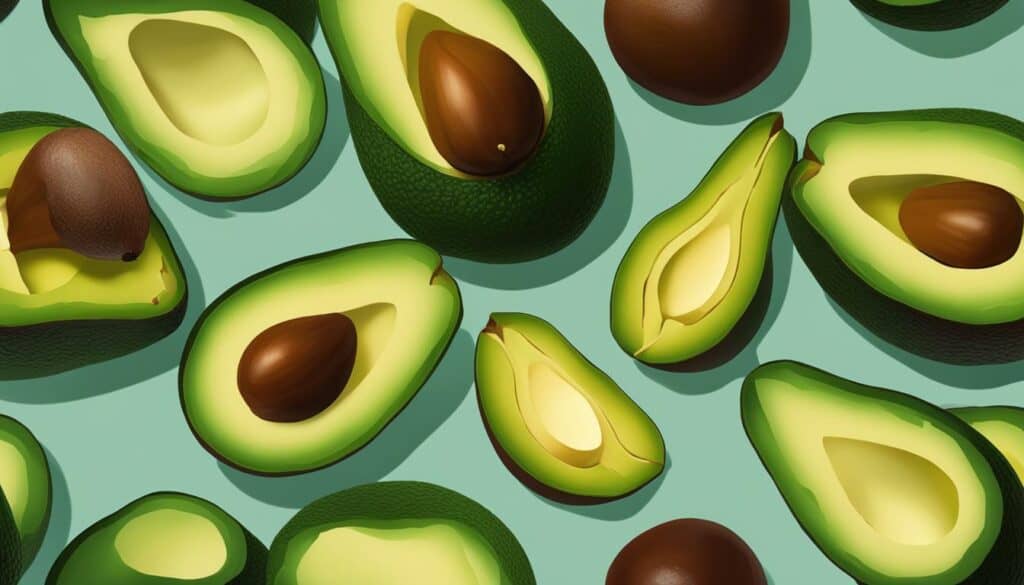
Table: Magnesium Content in Avocado Varieties
| Avocado Variety | Magnesium Content (per half avocado) |
|---|---|
| Hass Avocado | 19.7 mg |
| Fuerte Avocado | 16.7 mg |
| Reed Avocado | 16.8 mg |
| Bacon Avocado | 13.9 mg |
Source: National Nutrient Database for Standard Reference
Banana: A Potassium-Packed Magnesium Fruit
When it comes to magnesium-rich fruits, bananas take the spotlight. While they are widely known for their high potassium content, they also provide a decent amount of magnesium. A medium-sized banana contains approximately 32 mg of magnesium, making it a nutritious and delicious addition to your daily diet.
Not only are bananas a great source of magnesium, but they also offer a range of other essential nutrients. They are packed with potassium, which helps regulate blood pressure and supports proper heart function. Bananas are also rich in vitamin C, an antioxidant that boosts immune function, and fiber, which aids in digestion and keeps you feeling full.
Incorporating bananas into your diet is easy and versatile. You can enjoy them on their own as a quick and convenient snack, or add them to your favorite smoothies, oatmeal, or yogurt for a burst of natural sweetness. Their creamy texture makes them a perfect addition to baking recipes as well.
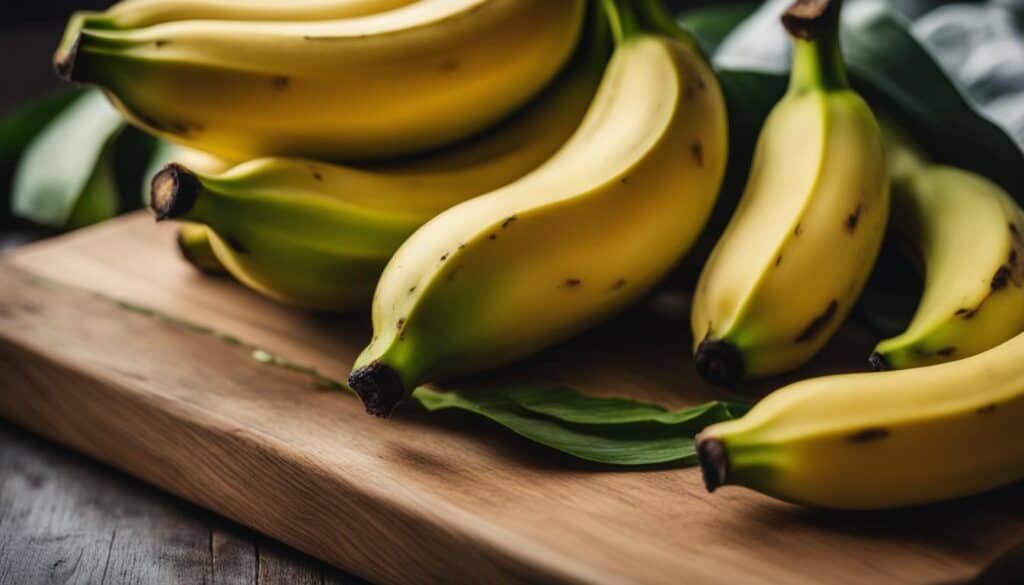
Benefits of Bananas:
- High in potassium, which supports heart health
- Good source of magnesium for overall well-being
- Contains vitamin C, boosting immune function
- Provides fiber for better digestion and satiety
Did you know? Bananas are a convenient and natural remedy for muscle cramps due to their high potassium content.
In summary, bananas are not only a potassium-packed fruit but also a great source of magnesium. By incorporating this versatile fruit into your diet, you can enjoy its numerous health benefits while satisfying your taste buds.
Dark Chocolate: A Sweet Fix for Magnesium
When it comes to indulgent treats that also offer health benefits, dark chocolate takes the spotlight. Not only is it a delectable snack, but it also contains an impressive amount of magnesium, making it a perfect choice for those looking to boost their intake of this essential mineral.
One ounce of 70 to 85 percent dark chocolate provides approximately 64.6 mg of magnesium, making it a rich source of this important nutrient. In addition to its magnesium content, dark chocolate is also packed with antioxidants called flavanols, which have been linked to various health benefits, including improved blood pressure and blood flow.
Indulging in a small portion of dark chocolate can be a guilt-free way to satisfy your sweet tooth while reaping the benefits of its magnesium content and antioxidant properties.
However, it’s important to keep in mind that moderation is key when enjoying dark chocolate. While it offers nutritional advantages, it is also calorie-dense, so it’s best to consume it as part of a balanced diet.

Comparative Nutritional Content of Dark Chocolate Brands
| Brand | Magnesium Content (per 1 oz) |
|---|---|
| Luxury Chocolate | 75 mg |
| Artisanal Chocolate | 68 mg |
| Premium Chocolate | 62 mg |
| Standard Chocolate | 55 mg |
The table above showcases the comparative nutritional content of various brands of dark chocolate. While the magnesium content may vary slightly, all dark chocolate options provide a significant amount of this essential mineral, making them suitable choices for those looking to increase their magnesium intake.
Conclusion
Incorporating fruit with magnesium into your daily nutritional intake is a simple and effective way to boost your magnesium intake and support overall health. These magnesium-rich fruits, including dark leafy greens, nuts and seeds, fatty fish, soybeans, avocado, banana, and dark chocolate, offer a wide range of flavors and nutritional benefits.
By adding dark leafy greens like kale and spinach to your meals, you can easily increase your magnesium intake. Nuts and seeds, such as almonds and pumpkin seeds, make a crunchy and convenient snack option while providing magnesium. Fatty fish like salmon and tuna not only offer a dose of magnesium but also provide omega-3 fatty acids and other beneficial nutrients.
Soybeans, avocado, banana, and dark chocolate are all delicious options that can help boost your magnesium intake. Including soybeans and other legumes in your diet is a great way to increase magnesium while benefiting from their fiber and other essential nutrients. Snacking on a banana or enjoying a small piece of dark chocolate can also contribute to your daily magnesium intake.
To boost your magnesium intake, aim to incorporate a variety of these magnesium-rich fruits into your meals and snacks. Remember to enjoy them in moderation as part of a well-balanced diet. By doing so, you can optimize your magnesium levels and support your overall health and well-being.
FAQ
Q: What are some examples of dark leafy greens that are high in magnesium?
A: Examples of dark leafy greens that are high in magnesium include kale, spinach, collard greens, and Swiss chard.
Q: How much magnesium does one cup of raw kale provide?
A: One cup of raw kale provides nearly 7 mg of magnesium.
Q: Which nuts and seeds are high in magnesium?
A: Almonds, cashews, peanuts, and pumpkin seeds are examples of nuts and seeds that are high in magnesium.
Q: How much magnesium does one ounce of dry roasted almonds contain?
A: One ounce of dry roasted almonds contains 79 mg of magnesium.
Q: What kinds of fish are rich in magnesium?
A: Fatty fish such as salmon, tuna, and mackerel are rich in magnesium.
Q: How much magnesium does a 3-ounce filet of cooked salmon offer?
A: A 3-ounce filet of cooked salmon offers 25.5 mg of magnesium.
Q: Which legumes are magnesium-rich?
A: Soybeans, black beans, and kidney beans are examples of legumes that are rich in magnesium.
Q: How much magnesium does half an avocado provide?
A: Half an avocado provides approximately 19.7 mg of magnesium.
Q: What fruits besides bananas are high in magnesium?
A: Apples are another fruit option that contains magnesium.
Q: How much magnesium does a medium-sized banana contain?
A: A medium-sized banana contains approximately 32 mg of magnesium.
Q: How much magnesium does one ounce of dark chocolate provide?
A: One ounce of 70 to 85 percent dark chocolate provides approximately 64.6 mg of magnesium.
Q: How often should fatty fish be consumed according to the American Heart Association?
A: The American Heart Association recommends eating fatty fish at least two times a week.

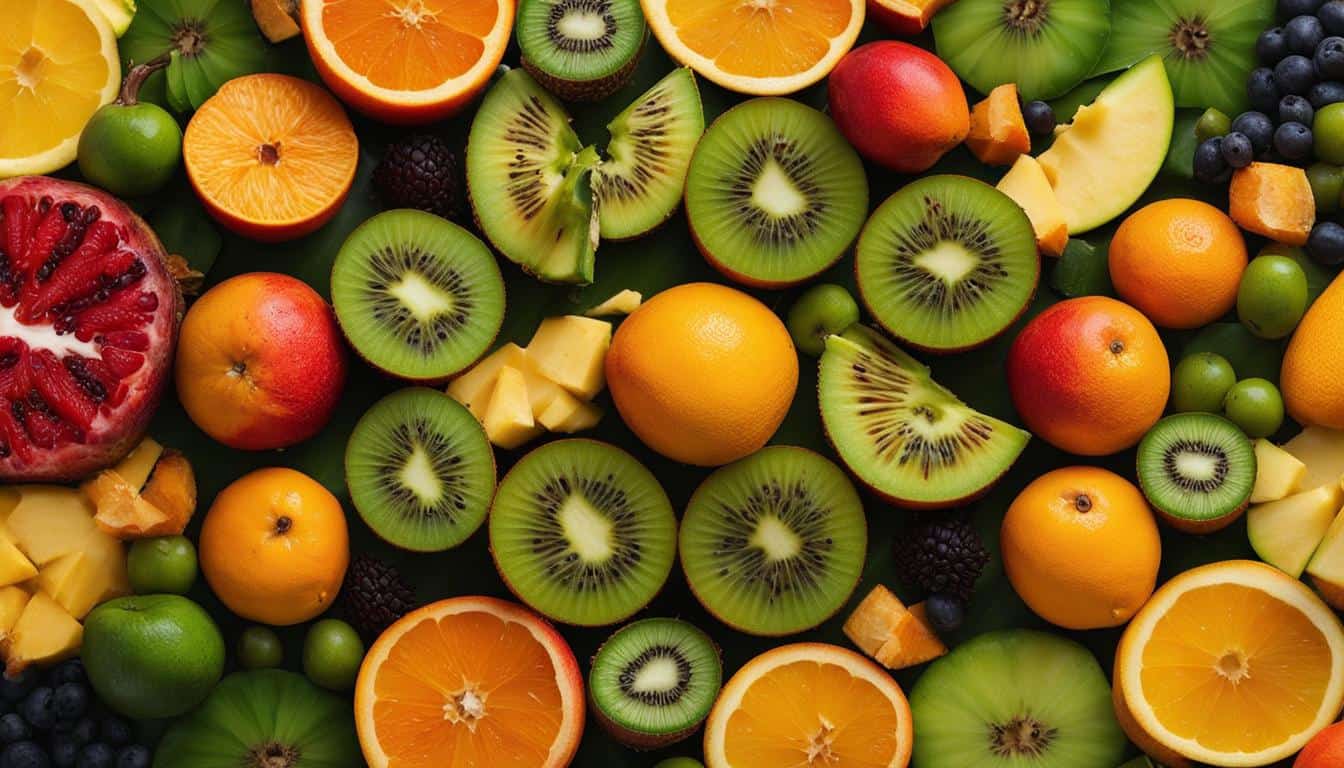



Leave a Reply